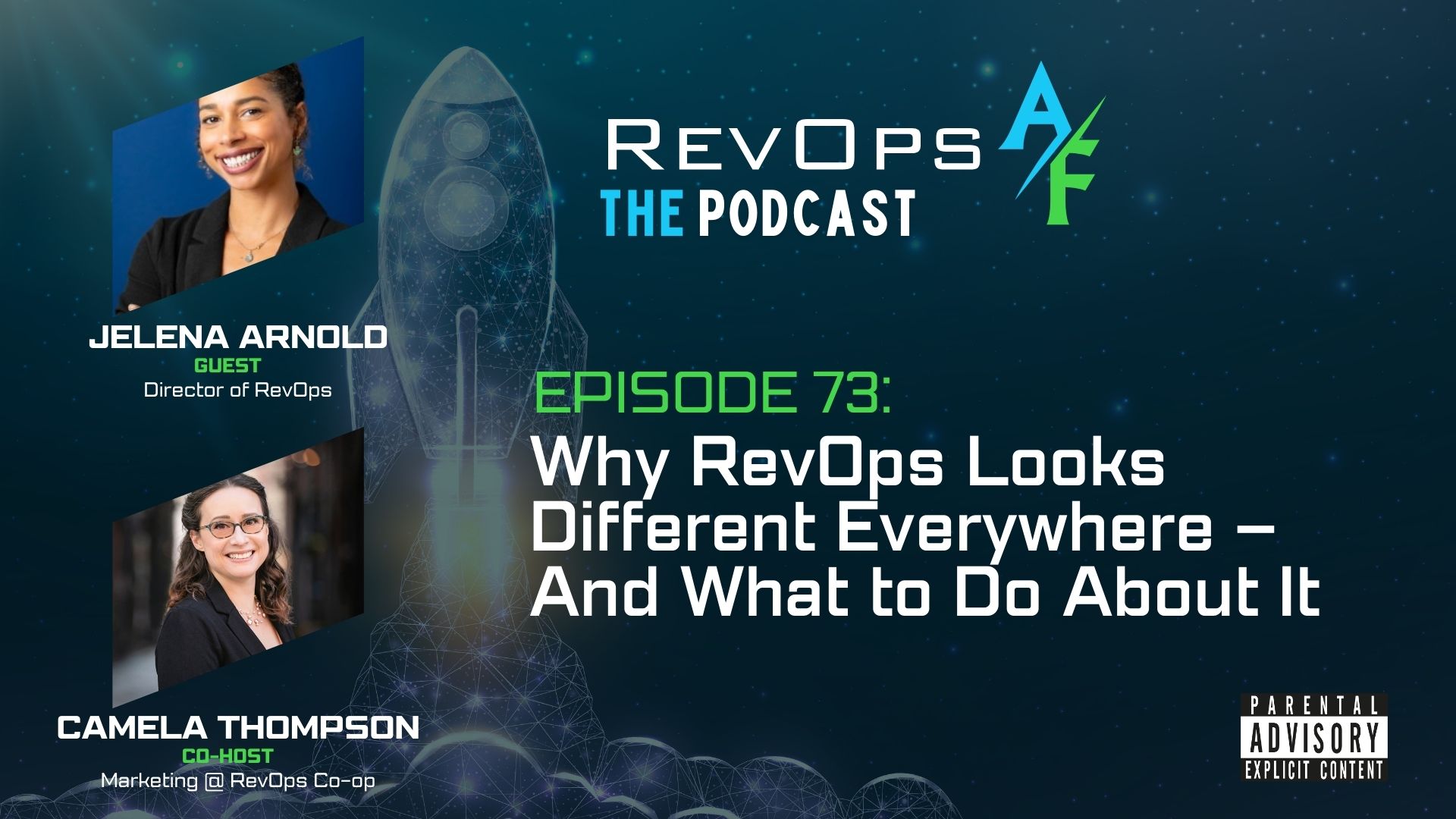
Why RevOps Looks Different Everywhere — And What to Do About It
Why RevOps looks different everywhere and what to do about it. Expert insights on organizational structure, executive alignment, and change management.
Welcome to the latest episode of the RevOpsAF podcast! Co-host Camela Thompson sits down with Rhys Williams, Co-Founder of Domestique. He’s a seasoned RevOps professional with over 15 years of experience, sharing his journey from landing a sales ops job (out of necessity during the financial crisis) to building a successful RevOps consulting firm. Join this deep dive into what RevOps truly entails, how to structure a high-performing RevOps department, and the ongoing debate about who RevOps reports to and why.
RevOps is a comprehensive and holistic function that spans the entire customer journey, not just isolated departments like sales or marketing. At Domestique, they break down RevOps into critical workstreams:
This sets the stage for a broader understanding of RevOps as a strategic enabler within any organization, highlighting the necessity for a clear framework that supports company-wide objectives.
"RevOps is not just about sales and marketing. It’s about aligning the entire customer journey including product, marketing, BDRs, sales, PS/CS, and support, all in alignment with finance." - Rhys Williams
Jump to clip to hear more about how Domestique breaks down RevOps responsibilities.
The ideal structure for a best-in-class RevOps department can be viewed in 5 key buckets: field operations, tooling, enablement, strategy, and insights. In a perfect scenario, a fully integrated RevOps team would cover all these aspects, but the reality is often more complex, with fragmented structures.
RevOps leaders should do their best to focus on creating a unified and aligned team by establishing regular cross-functional meetings and developing a clear charter that outlines the team’s objectives.
"In a perfect world, RevOps would cover everything from field ops to deal desk, but the reality is often a ‘Frankenstein monster’—it’s up to us to make it work." - Rhys Williams
Jump to clip to learn about the challenges of creating the perfect structure.
Rhys strongly advocates for RevOps to report directly to the CEO, arguing that this structure preserves the neutrality necessary for RevOps to function effectively and impartially across the entire organization.
However, he also acknowledges that in many organizations, RevOps reports to the CRO, which can still be effective if there’s a clear understanding that RevOps must work across all departments involved in the customer journey, not just sales.
Successful RevOps leaders must be adept at navigating different reporting structures and gaining buy-in across the organization to drive alignment and achieve their goals. You have to lead through influence.
"In a perfect world, RevOps is Switzerland. We can call out hotspots without throwing this individual or this department under the bus. Instead, let’s figure out how we work together to solve this hotspot." - Rhys Williams
Jump to clip to hear Rhys and Camela debate about reporting to the CEO or CRO.
Our average member has more than 5 years of RevOps experience. That means you’ll have real-time access to seasoned professionals. All we ask is that you’re generous with your knowledge in return.